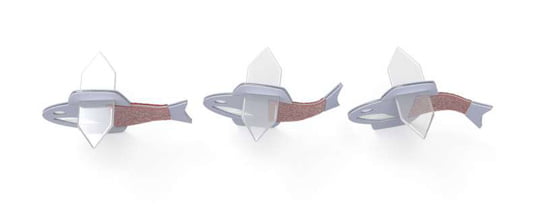
Not necessarily. It could be an artificial fish. And because the mind will go to something robotic, there are other kinds too. Like the bio-hybrid fish that biotechnologists from Harvard and Emory universities created.
The researchers took human stem cells at the stage where they have begun to develop into heart muscle cells, cultivated them on two surfaces, “glued” these two surfaces together, and achieved a result where when one expands, the other contracts; and vice versa. With the appropriate “chest cavity,” the systolic-diastolic movements are transferred to the back part of the structure, to the “tail,” which moves left-right…
“Why did you go to so much trouble, gentlemen?” The research program is broader, and concerns the construction of an artificial heart, declares Kit Parker, professor of bio-engineering and applied physics at Harvard. The “building” of cardiac tissue is a separate research, rather advanced. But this tissue must pulsate. The bio-hybrid fish is part of this cellular-myocardial research on pulses.
The construction of an even larger model (fish) will follow. But the distance to building an artificial heart that will work for decades is still very great. Until then, specially bred pigs will be “heart suppliers” for transplants – unless the expected is proven: that they are short-lived. If a pig does not meet a knife, it lives at most 20 years, and in the meantime, after 15, its heart begins to age…
